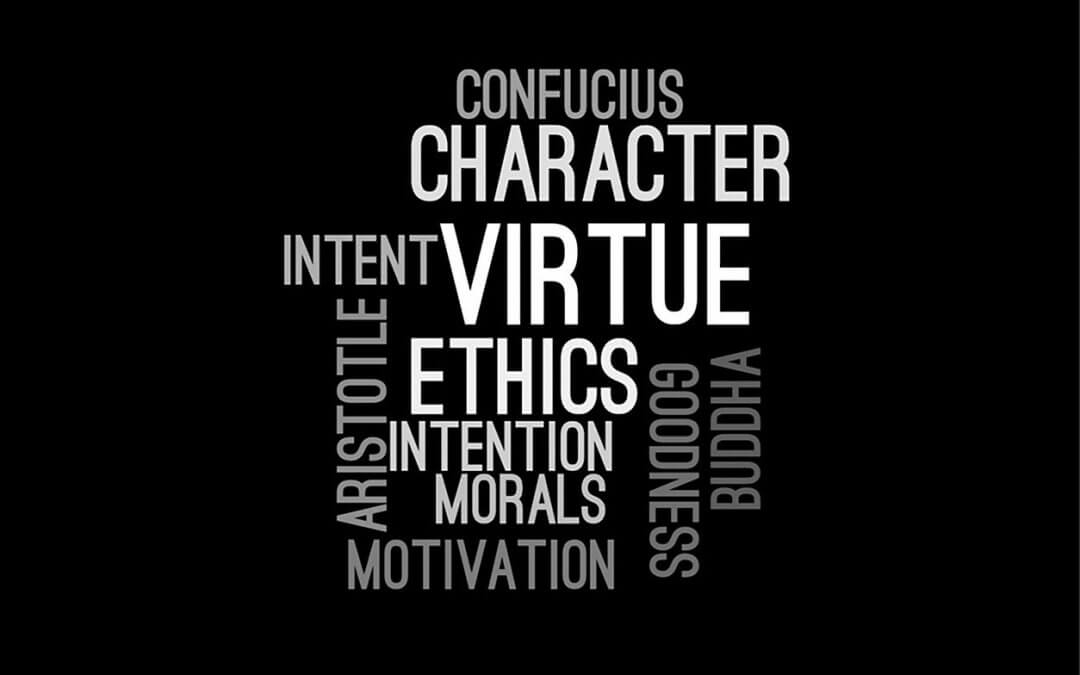The EOS Model® provides a useful foundation for businesses, but it falls short in addressing key aspects of creating an growth. By incorporating additional elements from the Gravitas 7 Attributes of Agile Growth® model, businesses can create a more comprehensive system that promotes growth while maintaining smooth operations. Focusing on Leadership, Strategy, Execution, Customer, Profit, Systems, and Talent, the 7 Attributes of Agile Growth® offer a more encompassing approach to achieving success.

Not Another **** Meeting
It easy to suffer meeting fatigue, especially at times like this. So how do you reduce meeting fatigue? I think there are several ways.
Do you need a meeting?
It is too easy to have meetings today, especially with Zoom and our lack of social interaction. However, just because it is easy doesn’t mean that it has to happen. Undoubtedly everyone has seen those mugs and memes – “I survived another meeting that could have been an email.” So before calling a meeting, determine several things:
- What is the purpose of the meeting?
- What is the expected outcome of the meeting?
- How needs to attend?
- How long should it be?
If you cannot easily articulate the first two, then you don’t need a meeting. If you can, “Who needs to attend?” should be easy to determine. Keep it limited to only those who need to attend because making it large and wasting people’s time will reinforce “death by meeting.”
Finally, as Leonard Bernstein put it so well, “To achieve great things, two things are needed: a plan and not quite enough time.” Keep the meeting short, which keeps pressure on everyone to get its purpose accomplished within the time because no one needs another session.
A Meeting Agenda
Having determined that a meeting is necessary, put together a meeting agenda with time allocation. As Bernstein’s quote above states, you need “a PLAN.” Your agenda is the PLAN. So, lay out all the parts you want to cover in the meeting, the estimated time for each item, and the takeaways. Not the specific outcomes, but that there will be an agreed date, action item, responsibility.
Once you prepare the schedule, share it with the invitees, so they understand the expectations and determine if they need to attend. For example, an agenda could look like the following.
| Item | Outcome | Time | |
| 1 | Introductions & Purpose | 5 minutes | |
| 2 | Update on project status – Just each step’s status |
|
5 – 10 minutes |
| 3 | Review of those items “Of Concern” and “Behind Schedule.” | Action Items, To-Do List | 45 minutes |
| 4 | Review of meeting outcome and schedule of next meeting if needed | Confirmation of Who, What, and When | 5 minutes |
The above agenda provides expectations of the meeting’s purpose, the expected outcomes, and how long the session will last. Without results, the meeting becomes a discussion with no solutions. I remember leaving a board meeting once where I was only an adviser, saying I would never attend another because, to paraphrase Samuel Beckett, “Nothing happens. Nobody commits; nobody is held accountable. It’s awful.”
Meeting Rhythms
Now just because we are suffering meeting fatigue doesn’t mean we don’t need meetings. For meetings to have value, they need a rhythm that is a continuous circle of meetings. Each session has a specific purpose, outcome, and time allocation. As Verne Harnish put it, “Goals without routines are wishes; routines without goals are aimless.” If you follow Rockefeller Habits, the 7 Attributes of Agile Leadership™, which I use, or EOS™, meeting rhythms will not be new.
However, whatever meeting rhythm you have, the key is to ensure the relevant data, financial, KPIs, etc. is circulated to all members prior to the meeting. Spending a large portion of the meeting receiving the data through PowerPoint presentations has a number of effects:
- It is just a huge waste of time. We can all read faster than we speak.
- Attendees tend to check out and so miss key pieces of information that may be presented.
- Giving people time to review and process the information will lead to better discussions.
- It increases “Death by PowerPoint,” and an aversion to meetings.
The ideal Meeting Rhythms for a company are below.
Daily Huddle
The Daily Huddle is a daily alignment meeting that lasts 10 or 15 minutes—done standing. All employees attend, and anyone not present should call in. If this seems complicated, remember General Stanley McChrystal, while in Iraq as Commander of JSOC from 2003 to 2008, did a daily huddle involving 50 people. However, he soon realized that the huddles needed to change to adjust to battlefield conditions, so they were expanded to include 7,500 people and run for 90 minutes.
The purpose is to synchronize activities across the organization and provide a daily forum for activity updates and scheduling. Each team member should contribute. However, it is paramount for the leader (CEO) to make sure it is too valuable to miss.
Sample Agenda:
- Headlines: Good news (personal and business). The aim is to make the attendees relaxed and build camaraderie.
- News: Any news from the previous day relevant to the entire team. Align on the Number One Priority for today
- KPIs: Review yesterday’s numbers and each persons’ progress regarding their stated Critical Numbers and Key Performance Indicators (KPIs).
- Issues: Any issues employees have encountered preventing them from moving forward on the Number One Priority for the day.
- Rocks: The most crucial task each team member is committed to accomplishing that day. The statement starts with: “Today I will commit to accomplishing…”
Weekly Meeting
The Weekly Meeting ensures the weekly execution of Quarterly Rocks’ sub priorities. This meeting should be 60 to 90 minutes.
Participants should prepare to discuss results, KPIs, accomplishments, Rock updates, and their respective Priorities for the upcoming week. The meeting is not to solve significant strategic issues but to resolve most minor matters relevant to the monthly or quarterly plan and problems from the Daily Huddle.
Maintain focused discipline on the time frame and make every minute count. Reward and recognize good performance
Sample Agenda
- News: Wins both personal and business
- CEO Update: On the prior week or week ahead. Making the meeting “a not to be missed!”
- KPIs: Did the team have a good week or a bad week? How is the team performing on Critical Numbers? How is overall performance?
- Department-level Quarterly Rocks Review: Is the team on track or off-track for the quarterly goals? What Priorities are going well? What Priorities require fixing? Completed and open assignments?
- Customer/Employee headlines: What are customers saying? What are employees saying?
- IDS: Identity, Discuss, and Solve important tactical or implementation level issues. Use collective intelligence. Action Items and the “To Do” List. Who What When (WWW)
- Close: One Phrase by each attendee summing up the meeting.
Monthly Meeting
The monthly meeting is the foundation of strategic execution. The discussion should start with a strategic training topic as part of the management team’s continual education. Frontline, middle and senior manager should attend, and the organization should use it as an opportunity to transfer leadership DNA.
This meeting is a place to discuss significant issues, which will have a long-term impact on the business. As these issues require more time for participants to brainstorm, debate, present ideas, and actively engage with each other to achieve the optimal long-term solution, the meeting should only be one or two topics identified in advance.
This meeting undertakes a review of the prior month’s financial results and the Rock’s execution status, so it should occur as soon as the monthly financials are available.
Sample Agenda
- News. Good personal news.
- Monthly strategic training topic(s)
- Wins and Misses. Successes and Misses from the prior and current month relating to the achievement of monthly and quarterly business goals.
- Review of Financial Statements: Monthly focus on Income Statement, Cash Position, and Working Capital.
- KPIs: Executive report out on Critical Numbers, Metrics, Lead Measures and KPI’s.
- Quarterly Rocks Review: On track? What is going well? What needs fixing? Where do you need help? Are there processes and inter-departmental flows that need improving?
- Customer/Employee headlines
- IDS
- Close
The Quarterly Meeting
The Quarterly meeting is a time for leadership to assess a variety of strategic issues. The update and execution of The One Page Strategic Plan drive the agenda. Other topics for discussion and resolution are the team’s interpersonal performance, specific elements of the company’s strategy, top-tier and bottom-tier employees, morale, client success and satisfaction, competitive threats, and industry trends. Focus on the four key areas: People, Strategy, Execution, and Cash.
This meeting focuses on executing the subsequent 13-week “Sprint” toward the next waypoint on your company’s 3HAG. The duration of the session is typically half to a full day, depending on company need. It should occur as soon as the quarterly financial results are available.
Sample Agenda
- Team Exercise or Icebreaker
- Prior 13 Week Sprint Assessment: Revise incomplete priorities. Review the attainments for the quarter against critical criteria.
- Financial Performance: CFO Report
- Next 13 Week Sprint Plan: Review of 1 Year Goals, 1 or 2 Critical Numbers-Upcoming Year & Quarter, Key Company Rocks, Key Metrics/Lead Indicators
- One Phrase Close
The Annual Strategic Planning Retreat
The annual strategic planning retreat is somewhat similar to the quarterly meeting; however, it is more strategic in scope. Assess the prior annual plan, current realities tested, and formulate a new long-range strategic plan. The yearly retreat focuses on the core ideologies, the BHAG, the development of 3–5-year strategic thrusts that will meaningfully differentiate the company.
The meeting’s duration is typically a whole day to two days, depending on company need, and is held offsite.
There is no need for the plan here as that can be a separate topic; however, in the end, communication of the outcomes to all employees need to be determined. The meeting rhythms should be set annually at the retreat, with the times and dates of all the meetings planned and circulated to everyone that will attend.
1-2-1s
All managers should have weekly 1-2-1s with their direct reports. These meetings should be an hour and the discussion focused on:
- How is the employee doing?
- Issues they are facing?
- Issues that the manager sees?
- KPIs and objectives for the quarter and year.
It is best if the agenda is agreed upon beforehand to prepare both the manager and direct report. If both know the topics for discussion, the outcome will be more fruitful, and if not, neither may have the requisite information at hand, making the discussion meaningless. Also, this weekly 1-2-1s are providing continuous feedback to the direct report and allowing for incremental improvements. Thus, at the time of the quarterly, or annual, review, there are no surprises, and no one has to recall what has happened over the last year.
If all those meetings seem overwhelming, I think on reflection it should reduce the number of overall meetings make the remaining ones more effective. Hopefully, with this guide your meetings can be more fruitful and engaging, resulting in better outcomes for the organization, the employees, and the managers.
(c) Copyright 2021, Marc A. Borrelli
Recent Posts
EOS is just that, an Operating System
What has COVID done to Company Culture?
COVID has affected everyone. However, companies need to examine if they have lived their core values during COVID, how they are reinforcing them in a WFH environment, and especially with the onboarding of new hires.
Profit ≠ Cash Flow
Knowing how much cash you generate is essential for planning for growth. Too many companies don’t know and when they grow they find they are continually running out of cash. Understand your cash flow generation and how to improve it through improvements in your Cash Conversion Cycle and using the Power of One.
What Are Your Critical and Counter Critical Numbers?
The key to achieving long term goals is to define short term goals that lead you there. Focusing those short term goals around a key metric is essential. However, ensure that the metric will not lead other areas astray by having an appropriate counter critical metric act as a counter balance.
Rethinking ‘Family’ Culture in Business: Fostering Performance and Success
Explore the importance of company culture and the potential pitfalls of adopting a “Family” culture in organizations. Learn how to foster a high-performance culture while maintaining key family values and discover success factors for family businesses. Rethink the “Family” culture concept and create a thriving environment for your organization.
Do You Truly Know Your Core Customer?
Knowing the profit of your core customers is key to building a growth model. Many companies have identified core customers that are generating a sub-optimal profit and so they cannot realize the profits they seek. Identifying the correct core customer allows you to generate profits and often operate in “Blue Ocean.”
The Spectacular Rise and Fall of the European Super League
The European Super League (ESL) collapsed within 48 hours of its announcement due to hubris, a lack of value creation, and fan backlash. The founders’ arrogance led them to disregard European football’s deep-rooted traditions and culture. At the same time, the focus on wealthy club owners instead of merit undermined the essence of the competition. The fierce backlash from fans, who felt betrayed by their clubs, demonstrated the importance of prioritizing supporters’ interests in football.
When Should I Sell My Business?
Many business owners want to sell at the top of the market. However, market timing is tough. Is this the best strategy? Probably not.
Does Your Financial Model Drive Growth?
Working with many companies looking to grow, I am always surprised how many have not built a financial model that drives growth. I have mentioned before a financial model that drives growth? Here I am basing on Jim Collin's Profit/X, which he laid out in Good to...
COVID = Caught Inside
As we emerge from COVID, the current employment environment makes me think of a surfing concept: “Being Caught Inside When a Big Set Comes Through.” Basically, the phrase refers to when you paddle like crazy to escape the crash of one wave, only to find that the next wave in the set is even bigger—and you’re exhausted. 2020 was the first wave, leaving us tired and low. But looking forward, there are major challenges looming on the horizon as business picks up in 2021. You are already asking a lot of your employees, who are working flat out and dealing with stress until you are able to hire more. But everyone is looking for employees right now, and hiring and retention for your organization is growing more difficult.















